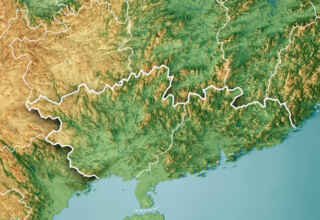
Facial recognition technology is one of the most controversial topics, which we are currently facing as a society, particularly due to the wide range of applications that it has, like surveillance, and also for the implications that it has for society and the negative consequences that misused facial recognition technology could have (Ovide, 2020). This controversy of facial recognition has also been exacerbated by recent events, like for instance how the Chinese government used this technology during the protests in Hong Kong to go against the protesters. This resulted in these protesters using various tactics with the objective of protecting their identity, like lasers that the cameras couldn’t process or recognise, full-coverage gas masks and eyewear (Wågström, 2019). Nonetheless, it has not only been regimes like the Chinese ones, which have been promoting more and more the use of this technology, for instance the United Kingdom and Australia are countries where facial recognition technology is widely used. Not only that, but this technology is also widely used in places like airports or police stations throughout the world, with very limited regulation in many cases (Brandom, 2018; Campbell, 2018).
Therefore, the fact that this technology has the capacity of entering personal lives and making them public has resulted in many arguing for the need for an update in the regulation of these kinds of technology. There are several routes that could be taken, like restrictions on law enforcement use, restrictions on other government use, and restrictions on commercial use (Lewis, 2021; Paris, 2020). There are experts, who agree that more regulation is needed and would be very useful, for instance Alvaro Bedoya, executive director of the Center for Privacy and Technology at Georgetown Law stated the importance of regulation of facial recognition technology as it has been done with other forms of technology which have been innovative at some point in time, as he pointed out that “we regulate commercial privacy on any number of other technologies. Credit cards, we regulate them. E-health records, we regulate them. Your cable viewing habits, protected. Your video rental habits, protected. So this idea that just because it’s a technology, we shouldn’t regulate it doesn’t fit with the entirety of the US commercial privacy landscape. It’s never been an argument in commercial privacy to say to Congress, “Oh, this is a technology. It’s just ones and zeroes. You shouldn’t really regulate it.” And it’s already regulated for 1 out of 8 Americans. In Illinois and Texas, the rule is to get permission. So there’s precedent for it both in how we regulated commercial privacy in the past and how we already regulate face recognition today.” Nonetheless, he also believes in the need for this comprehensive regulation to be sensible “and I think the simple rule of getting people’s permission makes a ton of sense. Beyond that, I’d like to see rules around bias and accuracy testing. You probably want protections for children. It should probably not be used on people who are 18 or younger. You probably want prohibitions on sensitive areas like hospitals or clinics or schools, where even if someone’s consented, you still shouldn’t use it. Look at surveillance cameras. You do not usually have surveillance cameras in bathrooms. You can have them all throughout the store, you’ll have them at the entrance, the exit, in the aisles, at the checkout. But you do not have them in the bathroom because we all understand that recording people in the bathroom is a bad idea” (Brandom, 2018).
There are other who have argued for more extreme measures, for instance Evan Selinger, philosophy professor at the Rochester Institute of Technology or Woodrow Herzog, professor of Law and Computer Science at Northeastern University School of Law and Khoury College of Computer Sciences, have argued for the complete ban of this technology, as for instance Selinger pointed out that the main risk of facial recognition is that society becomes normalised to it (Brandom, 2018). Nonetheless, others have argued that this approach is too simplistic and that for instance local bans would not stop facial recognition technology from further developing. Instead the critics of this extreme approach have pointed out that the best way for reeling in this technology would be through the comprehensive use of public policy that clearly defines where it should and should not be used (Lewis, 2021).
However, in order to understand the need for regulation, one must first understand what are the possible benefits and problems that facial recognition technology presents. Firstly, the main benefit, which facial recognition technology brings to the table is an increase in safety and security, due to the fact that it cannot only act as a deterrent against crime, but also it is an extremely useful tool for obtaining the identity of criminals. One of the best examples of this was recently, after the events at the Capitol on January 6, 2021; where facial recognition was very useful at identifying those who had tried to stop the electoral certification from happening (Gargaro, 2021; Lewis, 2021). Furthermore, the use of this kind of technology increases the capabilities of the security measures without the need of increasing the number of humans involved in this activity. What is more, facial recognition technology can be found as very useful in other areas like the medical sector, as it can be a key tool for detecting issues like for instance genetic disorders in a much faster and less expensive way than current forms of genetic testing (Gargaro, 2021). Therefore, these benefits clearly portray facial recognition technology as a crucial tool for maintaining public order in a notably efficient way (Lewis, 2021).
On the other hand, this technology also presents some major challenges, which cannot be left unrevised. The most important problem that facial recognition technology presents is the fact that it poses an immense risk on privacy. This point has been extensively argued by experts, for instance Albert Fox Cahn, Executive Director of the Surveillance Technology Oversight Project (STOP) pointed out that “with most of the digital surveillance, the difference isn’t that there’s more of a court oversight for that sort of activity in the analogue space, the difference is the cost,” as following someone undercover is a much more troublesome option, notably due to the fact that is requires significantly more resources. Matt Mahmoudi, a researcher and advisor on artificial intelligence and human rights at Amnesty International also argued that “in a standard police lineup you’re well aware that you’re being lined up,” “in the case of facial recognition, you have no idea that you’re in a virtual lineup. You might at any moment be in a virtual lineup” (Feiner and Palmer, 2021). In addition, it has been reported that facial recognition surveillance technology is very often misused, and it can even lead to false positives, for instance there has been two recent cases in the US where the use of this technology has led to false accusation and imprisonment. Even companies like Google, Microsoft and IBM have either stopped the selling of their systems or they have even refrained from working on this technology. Amazon also placed a moratorium on the sale of its “Rekognition” tool to police forces (Paris, 2020).
In conclusion, the idea of completely banning this technology may not be a plausible one. Thus, it is imperative that those in charge of the decision-making are able to draft comprehensive policies, which strictly regulate the use of facial recognition technology. Not only that, but there are some aspects, which cannot be left untouched, for instance rigorous controls should be put in place to limit the use of this technology for law enforcement agencies. Nevertheless, it order for this policy to be effective, rigorous oversight and transparency must also be put in place in order to ensure that there is no misuse of this technology (Lewis, 2021; Campbell, 2018).
Bibliography:
- Brandom, R. 2018. How Should We Regulate Facial Recognition? The Verge. Retrieved on July 01, 2021, available at: https://www.theverge.com/2018/8/29/17792976/facial-recognition-regulation-rules
- Campbell, L. 2018. Why regulating facial recognition technology is so problematic – and necessary. The Conversation. Retrieved on July 01, 2021, available at: https://theconversation.com/why-regulating-facial-recognition-technology-is-so-problematic-and-necessary-107284
- Feiner, L. and Palmer, A. 2021. Rules around facial recognition and policing remain blurry. CNBC. Retrieved on July 01, 2021, available at: https://www.cnbc.com/2021/06/12/a-year-later-tech-companies-calls-to-regulate-facial-recognition-met-with-little-progress.html
- Gargaro, D. 2021. The pros and cons of facial recognition technology. IT Pro. Retrieved on July 01, 2021, available at: https://www.itpro.com/security/privacy/356882/the-pros-and-cons-of-facial-recognition-technology
- Lewis, J.A. 2021. Regulating Facial Recognition Technology. Center for Strategic and International Studies.
- Ovide, S. 2020. A Case for Banning Facial Recognition. The New York Times. Retrieved on July 01, 2021, available at: https://www.nytimes.com/2020/06/09/technology/facial-recognition-software.html
- Paris, D. 2020. Australia needs to face up to the dangers of facial recognition technology. The Guardian. Retrieved on July 01, 2021, available at: https://www.theguardian.com/commentisfree/2020/aug/07/australia-needs-to-face-up-to-the-dangers-of-facial-recognition-technology
- Wågström, G. 2019. The Dangers Of Facial Recognition. Forbes. Retrieved on July 01, 2021, available at: https://www.forbes.com/sites/forbestechcouncil/2019/10/24/the-dangers-of-facial-recognition/?sh=91ebadc63079
By Mahmoud Refaat: The European Institute for International Law and International Relations.












